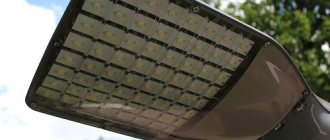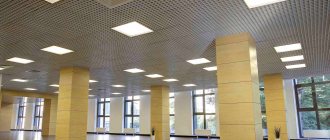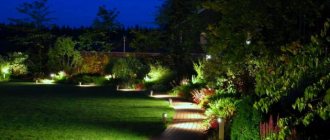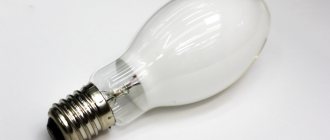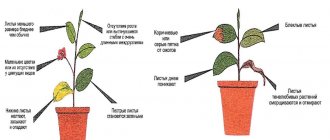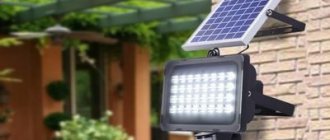City-wide parks and small district squares are an important part of the city infrastructure, which serves as a place for recreation and public events. They are visited both during the day and in the evening. To make your stay in the park after sunset as comfortable and safe as possible, it is important to organize the proper level of lighting on their territory. The use of artificial light in the design of green urban areas is strictly regulated by standards, but at the same time provides ample opportunities for the implementation of original design ideas and artistic concepts.
Purpose of lighting of park areas
Modern city parks are objects with numerous and varied infrastructure. In addition to green spaces and pedestrian alleys, their territory often contains children's and sports grounds, reservoirs with embankments, catering outlets, fountains, attractions, sculptures and other landscaping elements. For high-quality lighting of all objects, a complex lighting system is used, with the help of which several important tasks are solved at once:
- makes the park suitable for 24-hour visits;
- allows people to easily navigate a wide area;
- increases the level of security by preventing crimes;
- gives visitors pleasant emotions;
- creates a relaxing atmosphere, optimal for relaxing in the fresh air;
- gives the landscape ensemble unique features;
- increases the prestige and social attractiveness of the object.
Lighting standards in parks and squares
External lighting of green urban areas is carried out taking into account the status of the object, its area and landscaping. For small squares, simple lighting schemes are used - uniform installation of the same type of lights around the perimeter and at key points: steps, paths, turns, benches, children's and sports grounds. To illuminate large parks, combined systems are used, which include lamps of different types and purposes.
The number, lighting characteristics and location of lighting fixtures are not regulated. The main requirement for artificial lighting in parks or public gardens is that it must comply with federal sanitary and hygienic standards. Particular attention is paid to the level of illumination of the territory. This parameter depends on the functional purpose of a certain zone and is determined by SP 52.13330.2016:
- main entrance to the park – 6 lux;
- central alleys – 4 lux;
- secondary entrances and paths – 2 lux;
- public recreation areas – 10 lux.
Options for implementing park lighting
A variety of lighting devices allows not only to create background lighting of the area, but also to create accents to highlight individual objects. When landscaping parks and squares, the following lighting options are traditionally used:
- General. It is used in large areas and in places where there are large concentrations of visitors. For example, central entrances, sports and children's playgrounds, main alleys. Creates bright lighting, comfortable for outdoor activities, entertainment and long walks.
- Flooding. Used in the design of walking paths and secondary alleys, next to benches and gazebos. Creates soft diffused light, comfortable for walking and relaxing.
- Marking. Allows you to illuminate the boundaries or contours of individual objects. It is actively used for illuminating paths and paths, bridges, stairs and steps. Provides ease of orientation for visitors on site.
- Decorative. It is used to create a festive atmosphere or attract the attention of visitors to a certain object. It is performed in the form of accent lighting of trees, sculptures and other elements, as well as for the decoration of fountains, ponds, arches and other architectural forms.
Applications of street lamps
To illuminate the largest highways, devices with a reflector (a device for increasing the concentration of light) with a power of 250 to 400 W are usually used. If it is necessary to illuminate a secondary road, you can use special lampshades that scatter light on the roadway or, as in the previous case, a reflector. For such purposes, lamps with a power of 70–250 W are suitable.
On sidewalks intended for pedestrians, as well as in forests, parks and bicycle paths, predominantly diffused light is used. The power of the devices in this case is 40–125 W. The choice of power is made depending on the distance at which the pillars are located from each other.
Special spotlights are used to illuminate billboards, road signs, buildings and other information objects. Decorative lighting techniques are used to illuminate buildings.
Lighting options for parks
There are different requirements for lighting paths and sports fields. Accordingly, to create illumination of these zones, devices of various types must be used.
Lanterns
They are a classic solution for street lighting. Create uniform diffused light. They are a metal support of round, square or shaped cross-section with a lampshade made of frosted glass, polycarbonate or acrylic installed on top. The recommended height of park lamps is up to 4-6 m. They can be equipped with one, two or more light sources.
Spotlights
Create a bright directional light flux. Spotlights vary in shape, power and size. When lighting large areas, they are installed on high masts (up to 8-16 m). To create accent lighting, for example, a separate tree, sculpture or fountain, compact ground-mounted spotlights are used.
Bollards
They are light columns up to 1.5 m high. They have a metal or transparent body (frosted glass, plastic). They are equipped with special reflectors that direct the light flux downwards. They are used for contour lighting of garden and park paths, steps, as well as for illuminating lawns and flower beds.
Spot light
It is used exclusively for marking pedestrian areas, fences, flower beds and various compositions, therefore it has a low brightness level. Spot lighting is performed using recessed lamps of various shapes and sizes, which are mounted directly into the pedestrian path or the adjacent part of the lawn.
Suspension systems
Used to create artistic illumination. They give the landscape an elegant look and create a festive mood. Often used for decorative decoration of arches, pergolas, trees and other objects. They are presented in multi-color garlands, LED wires, nets, pendants with lamps of different shapes and colors.
Underwater lighting
Used for decorative design of park fountains and ponds. Presented with sealed low power lamps (12 Volts). They are installed at the bottom of the reservoir and create a bright beam directed through the water column. They are often combined with floodlights and ground lamps, which can be placed around the perimeter of the reservoir.
The most commonly used types of outdoor lighting system
| Figure 3. Classification of cantilever outdoor lighting systems with high-pressure mercury lamps: Group I – outdoor lighting systems with an isolated optical compartment and control gear compartment; Group II – external lighting systems with combined compartments. |
The most common are closed cantilever outdoor lighting fixtures with high-pressure mercury lamps. The classification of most known design options for such lighting devices is presented in Figure 3. The main criterion for classification is the isolation or combination of cavities (compartments) of the location of the optical system with light sources and ballasts (groups I and II). Additional classification criteria were service directions (top, bottom), separate performance or combination of the functions of the body and reflector (subgroups I-1 and II-1); inseparability of the connection of the upper and lower covers, respectively, with the reflector or with the light-transmitting element; relative position of the mercury lamp socket and the mast console.
In some cases (for particularly clean operating conditions), open versions of console lighting devices can be used.
The housings of outdoor lighting systems have a wide variety of shapes (from spherical, disk and cubic to cylindrical). Various parts of the housings and the housing with light-transmitting elements are connected, as a rule, using screwless non-corrosive connections, mainly of the “buckle” type, such as “gramophone locks”. Along with housings stamped from sheet steel or aluminum (in cheap types of outdoor lighting systems), housings made of aluminum alloys, produced by injection molding or continuous pressing, as well as fiberglass, are widely used. In numerous cases, the designs of outdoor lighting systems use composite housings consisting of a relatively small rear assembly mating with a bracket or mast, which experiences large mechanical loads during installation and operation and is therefore made of metal by injection molding, and an assembly containing an optical system with a source light and having a large surface, which is made, for example, from fiberglass or acetobutyrostyrene, resistant to ultraviolet radiation.
Light sources for park lighting
When creating lighting in parks and squares, high-power lamps are used. To illuminate entrances and crowded areas, 240-500 W devices are used, for secondary paths and other areas - 125-160 W. In this case, lamps of different types can be used as a light source.
- Gas discharge. Represented by fluorescent, mercury and sodium lamps. They have a long service life, high luminous intensity, stable spectrum and long service life. However, such lamps have a number of disadvantages: they light up with a delay, flicker when voltage drops, and make noise during operation.
- Halogen. Economical devices capable of creating bright and even light. They work efficiently throughout their entire service life. However, they are highly sensitive to voltage changes in the electrical network.
- Incandescent. Inexpensive, silent and durable lamps capable of emitting stable light even with strong voltage fluctuations. The main disadvantage of these devices is their low efficiency, which entails high energy consumption.
- LED. Modern devices with good color rendering, long service life (up to 50,000 hours), high environmental friendliness and fire safety. They are more expensive than other lamps, but quickly pay for themselves due to energy savings.
The park lighting system can be supplemented with special sensors and automatic control. This will reduce energy consumption, as well as create different lighting scenarios with original brightness transitions and color changes.
What is the choice based on?
When organizing lighting, luminaires are selected to install a specific type of lamp. Along with the design features, technical characteristics play an important role, as well as the degree of their compliance with the conditions of future work.
Characteristics of light sources for outdoor use
Main criteria when choosing lamps for street lamps:
- lighting intensity: the larger the area and the higher the pole, the higher the brightness level should be;
- the power of the lamp, in many cases, affects the efficiency of operation, the only exception being LED analogues, since at a minimum power level they emit bright light;
- the conditions in which the lamp, and therefore the lamp, operates, and of all existing types of light sources at sub-zero temperatures, the brightness level drops only for luminescent analogues.
Color plays a much smaller role when choosing street lighting elements than when organizing indoor lighting. Another parameter is the diffused or directional light of the lamp. Different objects use light sources with different radiation characteristics.
For example, LED analogues provide directional lighting with a high level of brightness. Lamps with this type of light source are used when organizing architectural lighting. They are also used to solve other problems, using a special type of diffuser.
Another parameter that you should pay attention to is the brand of the product and its price. Some types of light sources (LED) need to be selected especially carefully, since in most cases only proven and reliable manufacturers offer high-quality products with high-quality crystals. And this is an important factor, since the duration of the lamp’s operation depends on it.
Special Recommendations
In order for park lighting to effectively perform its functions, it is important to take into account a number of additional rules.
- The area lighting project must be developed individually for each object. It must take into account the size of the park, topography, attendance, density of plantings, location of key landscaping elements and other unique features.
- When placing lamps on the territory of a public garden or park, it is necessary to eliminate the effect of dazzling visitors. Bright directional light should also not hit the roadway along which vehicles are moving.
- Lighting devices must work flawlessly at any time of the year. To do this, you need to choose devices with a high degree of protection from moisture, dust and temperature changes, as well as with a durable, vandal-proof casing.
- The best level of visibility for park visitors is provided by white color. To achieve good color rendering and contrast, it is recommended to use lamps with a warm (2600–3700 K) or neutral (3700–5000 K) color temperature.
- Park lamps should look harmonious in the surrounding landscape not only at night, but also during the day. The attractive design will turn them into an independent decorative element when the park lighting is turned off.
And do not neglect the quality of work. The design and installation of park lighting should be carried out by professionals who can create the ideal balance between energy efficiency, aesthetics and safe operation of the system.
Additional Tips
- To illuminate landscape steps, bushes and trees, it is best to use mobile or stationary lamps with a height of 0.5 to 1 meter;
- Fluorescent lamps turn on slowly or do not light up at all at low temperatures, so it is not advisable to use them in areas where frost occurs;
- It is safest to use lamps with a voltage of 12 V or 24 V. Therefore, if you plan to power outdoor lighting equipment from a 220 V network, it is better to install a step-down transformer.
